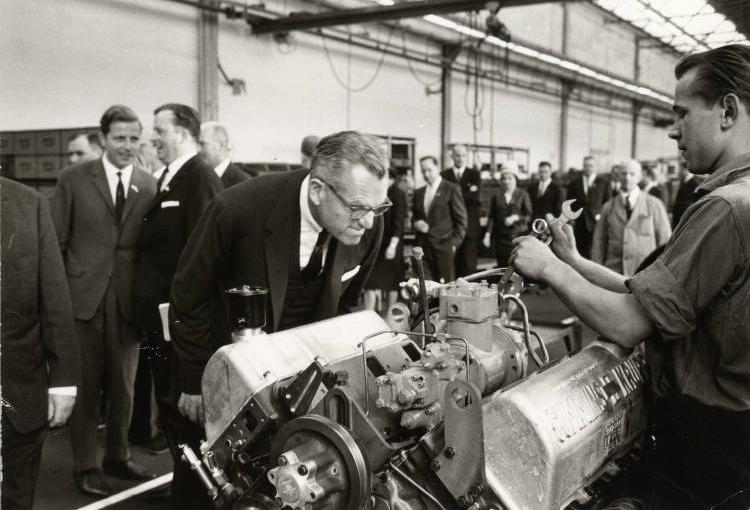Founded in 1919, Cummins, Inc. is a global power technology leader based in Columbus, Indiana. The company is organized into five distinct but complementary business segments: Engine, Power Systems, New Power, Components, and Distribution. While the first four segments concentrate on manufacturing, technology, and research development, Cummins’ distribution segment focuses on developing and maintaining a comprehensive global distribution strategy and creating marketing processes and sales strategies to reach the widest possible customer base.

In 2015, Cummins announced that its Distribution Segment headquarters would relocate from Columbus to Indianapolis. Cummins acquired its North American distributors to generate more revenue, and its decision to move this portion of the company to Indianapolis was made to facilitate better collaboration among employees as well as accommodate growth resulting from these acquisitions.
The former site of was selected as the location for the headquarters, which Cummins purchased for $4.3 million. The City of Indianapolis, meanwhile, invested $3.3 million in infrastructure improvements and parking on the site. It also chose to abate 70 percent of the development’s property taxes for ten years.
Given Cummins’ longstanding investment in architecture, which originated with former Chairmen and CEO Joseph Irwin Miller, the company decided to hold an international competition to select the distribution headquarters’ designer. New York-based Deborah Berke Partners was chosen as the contest winner and worked in association with Indianapolis-based RATIO Architects on the project.
Cummins’ existing lease on office space in downtown Indianapolis dictated a very aggressive construction schedule. To adhere to the project’s timeline, foundation-and-utilities work took place while the building’s design was still in progress.
The headquarters’ final design was a nine-story, 179,000 square foot sculpted tower. Cummins’ request for sustainability and building performance is reflected throughout the property. The tower’s façade, for instance, is made up of a varied grid of glass and metal fins that provides solar control only where it is required for visual comfort and energy performance. This feature reduces the cooling load by 30 percent annually and 10 percent at peak times. Other sustainable elements include onsite chillers and boilers, which use less expensive electricity and natural gas, green roofs on the parking garage, a second-level roof that captures on-site stormwater, and a large underground cistern that collects additional runoff and provides water for irrigation.
Inside, the base of the tower includes a lobby and retail space. The second floor is filled with employee common spaces along with a conference center for employee development. The remainder of the building is largely dedicated to flexible employee workspaces, which can be configured in multiple ways.
Over 60 pieces of art were commissioned by Cummins for the new headquarters, which are located throughout the building. The property also includes a large outdoor public plaza that welcomes staff and guests to the site. The total cost of the entire project was $30 million.
Cummins Indianapolis Distribution Headquarters opened in January 2017. Later that same year, Deborah Berke Partners received a Merit Award at the American Institute of Architects, New York (AIANY) Design Awards for the firm’s work on the project.
360 Market Square, a residential skyscraper, opened next door to Cummins Indy Headquarters in 2018. Both properties are considered part of the Market Square Redevelopment.
With its 9,000 dealers and distributors and its service to approximately 190 countries and territories, the Cummins staff at its Distribution Headquarters has overseen more certified service and support locations than any other engine manufacturing company in the world. They are responsible for making sure that these locations deliver high-quality repairs, planned maintenance, and solutions for upgrades. They also ensure that genuine Cummins parts and any accompanying custom engineering requirements are always available to customers.

Help improve this entry
Contribute information, offer corrections, suggest images.
You can also recommend new entries related to this topic.